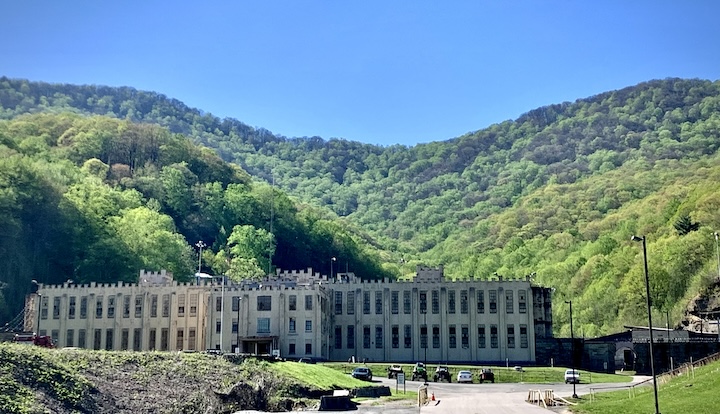Karen and I met Pete Waddington at the U-Joint’s bar in Chattanooga while having dinner before a play. Pete told us an amazing story about leasing a former Tennessee State Prison in Morgan County for one dollar a year and turning it into a tourist attraction complete with a restaurant, gift shop, concert venue, campground, and distillery. He gave us his cell number and said to call before we visit and he would take care of us. So, we did.
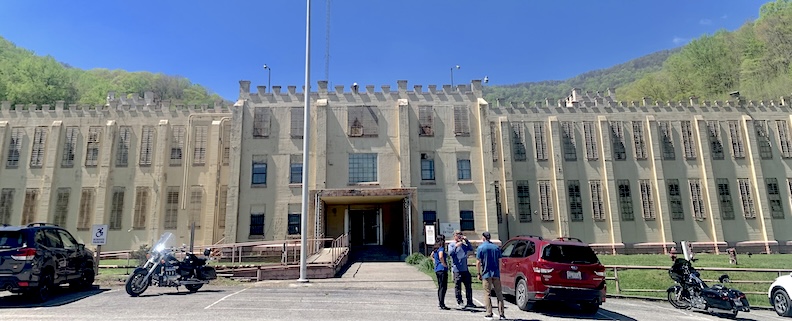
It’s not often you get to tell visitors, “Today, we’re taking you to prison.” My brother Jon and his wife Brenda were game to go. Convicts leased to work in coal mines built a wooden version of “Brushy” in 1896 and later dug coal for the prison’s own mine. Convict labor was used to quarry local sandstone and cons completed building the current prison in 1935. Built for 600 inmates, it often held twice that amount. It’s estimated that over 10,000 deaths occurred at the maximum-security prison known as “The End of the Line” by the time it closed in 2009.
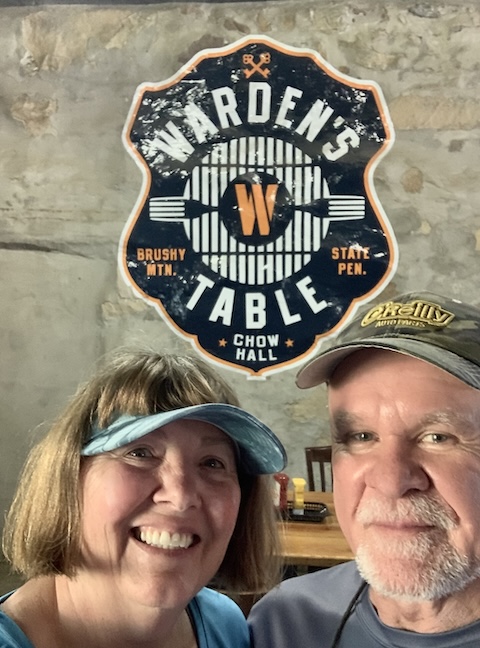
An old maintenance building, converted into a restaurant and gift shop was our first stop upon entering the prison’s 280 acres. Jon, Brenda, and Karen went inside, but I was stopped in the parking lot by Ray Tucker, a prison guard that served under Warden Stonney Lane. The prison hires former nonviolent inmates and guards to lead tours on weekends, but we arrived on a Thursday and would have to take a self-guided tour. Ray asked me if I was interested in the prison’s history. I answered, “Very much.” I could have spent all day with Ray and failed to write down everything he shared, but his accounts of working in the pen were dark and gruesome. I do remember Ray saying, “Hardened convicts were always convicts. You could tell the bad ones. When they were released, they bounced right back here.” He had seen an inmate murdered over thirty-nine cents and another over an argument about a praying mantis.”
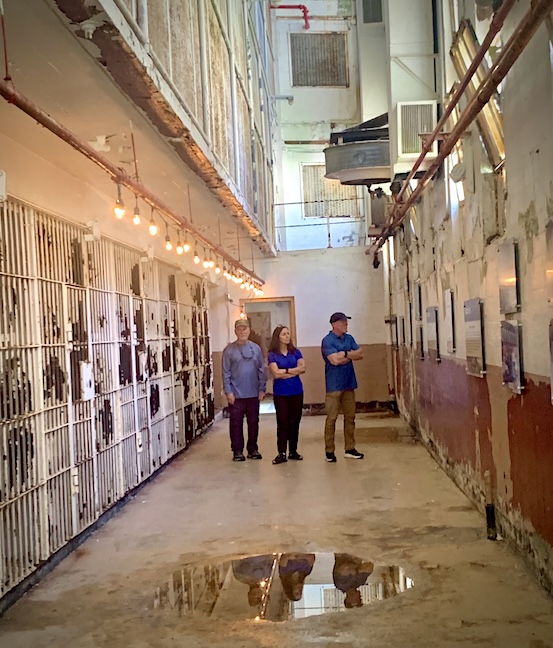
The atmosphere inside the cell blocks was chilling. The peeling paint and rusty fixtures were left as they were abandoned in 2009. Descriptions and photos of daily life for the incarcerated left no doubt about how brutal “hard time” was in this era. Records indicate 278,225 “tortured souls” were confined here during the prison’s 113 years of operation.

Ray Tucker told me he escorted Martin Luther King Jr.’s murderer into Brushy prison upon arrival in 1970. James Earl Ray orchestrated an escape for himself and 6 fellow inmates in 1977 by building a ladder in pieces that were put together to scale the back wall of the prison’s exercise fields during a planned fight to create a diversion. He was recaptured 58 hours later only 8.5 miles away. James Earl Ray survived being stabbed 22 times by four black inmates and died years later in Nashville’s prison from kidney disease.
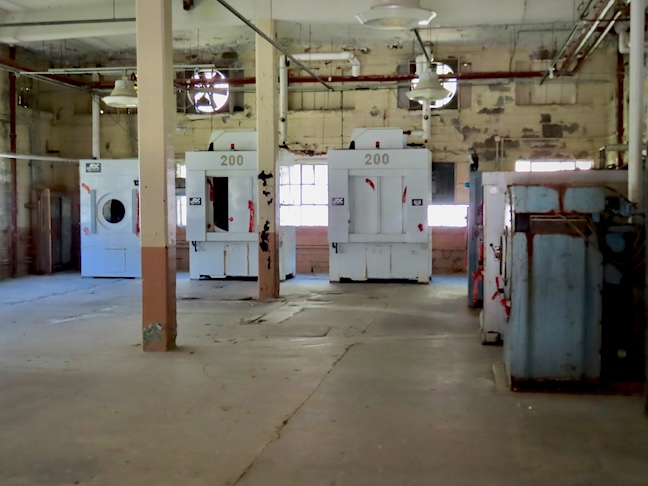
In the prison laundry, 250-pound capacity washers, dryers, and machines used to press and stitch clothes were operated in two, 12-hour shifts by inmates paid 17 cents an hour. Prisoner coal miners’ clothes were sent here when the miner’s bathed in their 60-stall bathhouse after their 12-hour shifts in the mines. Using 12-hour work shifts allowed officials to double the capacity in each cell, rotating men in an out on their work schedules. For the first time in 1928, the Feds made Brushy provide towels to prisoners after they showered.
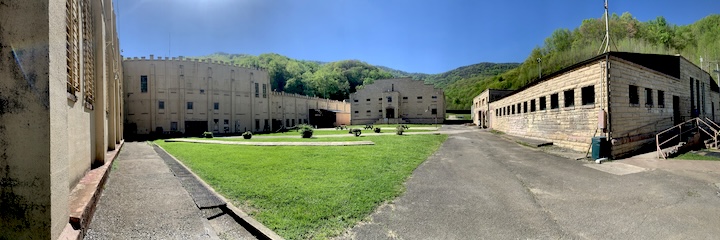
The main prison building is shaped like a Greek Cross with the cafeteria and two-story prison cells. Behind the main building, the structure on the right now contains a museum, movie theater, and the old laundry room. In the middle, straight across the yard is the gymnasium. Farthest back on the left is the former maximum-security unit. Behind the gym is a huge playing field now used for concerts. The farthest back, right corner of the playing fields Is where James Earl Ray and his six coconspirators escaped over the wall.
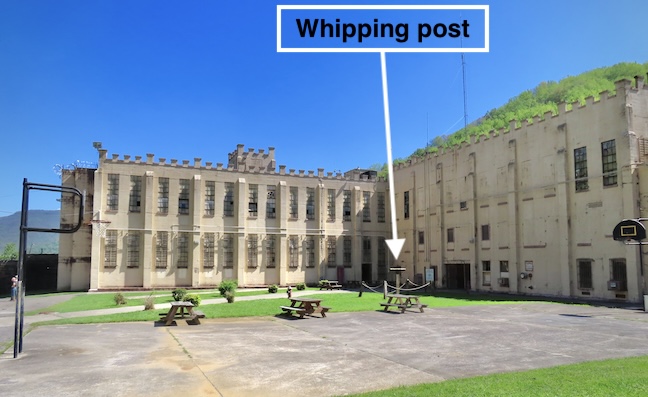
Looking back at the main building we see the outdoor basketball court and the whipping post. Inmates watched as offensive prisoners were beaten with a four-foot leather strap attached to a baseball bat handle. The beatings were outlawed in 1965.
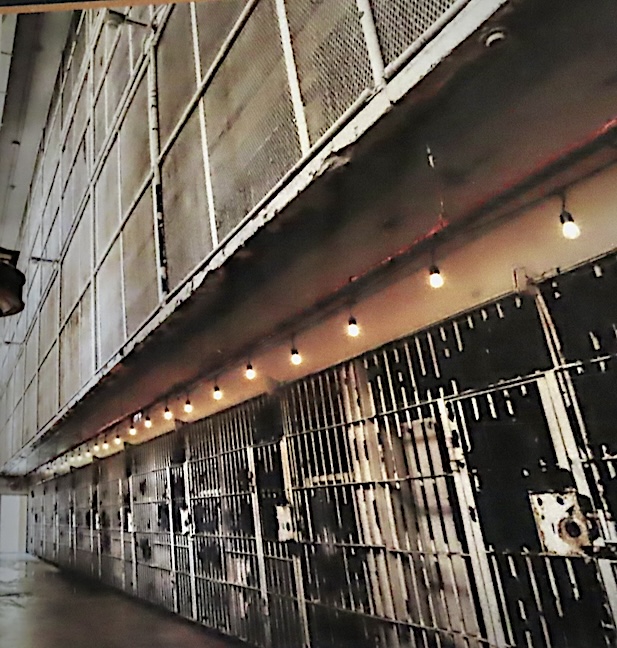
The walkways on the upper rows of cells had to be screened off to keep prisoners from throwing each other to their deaths. I noticed that visitors spoke in low, reverent tones and remained very somber while roaming inside these dismal confines, showing solemn respect for the many men that suffered and died in Brushy Mountain State Penitentiary. You can feel the presence of tragic ghosts.
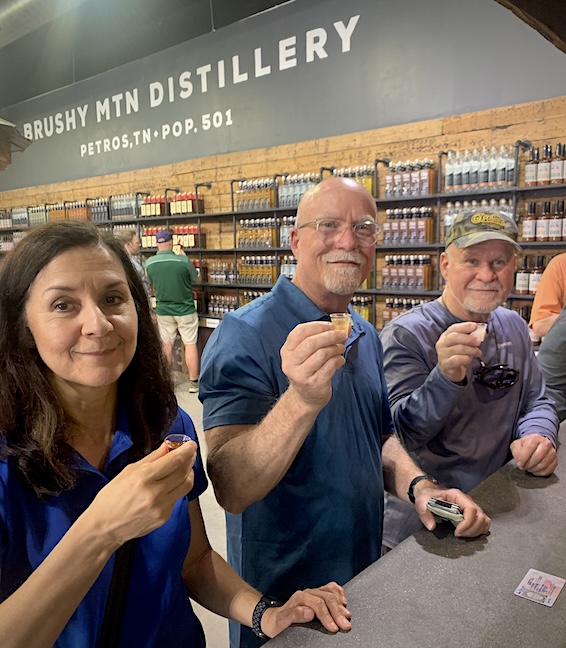
To lift our spirits we indulged in a tasting session of Brushy Mountain Distillery’s 10 tempting flavors of moonshine. The 500-or-so residents of nearby Petros, TN saw generations of their families’ jobs lost when Brushy closed, but they gladly welcome tourists to experience the prison and enjoy the change in what it means to “spend time” here.

